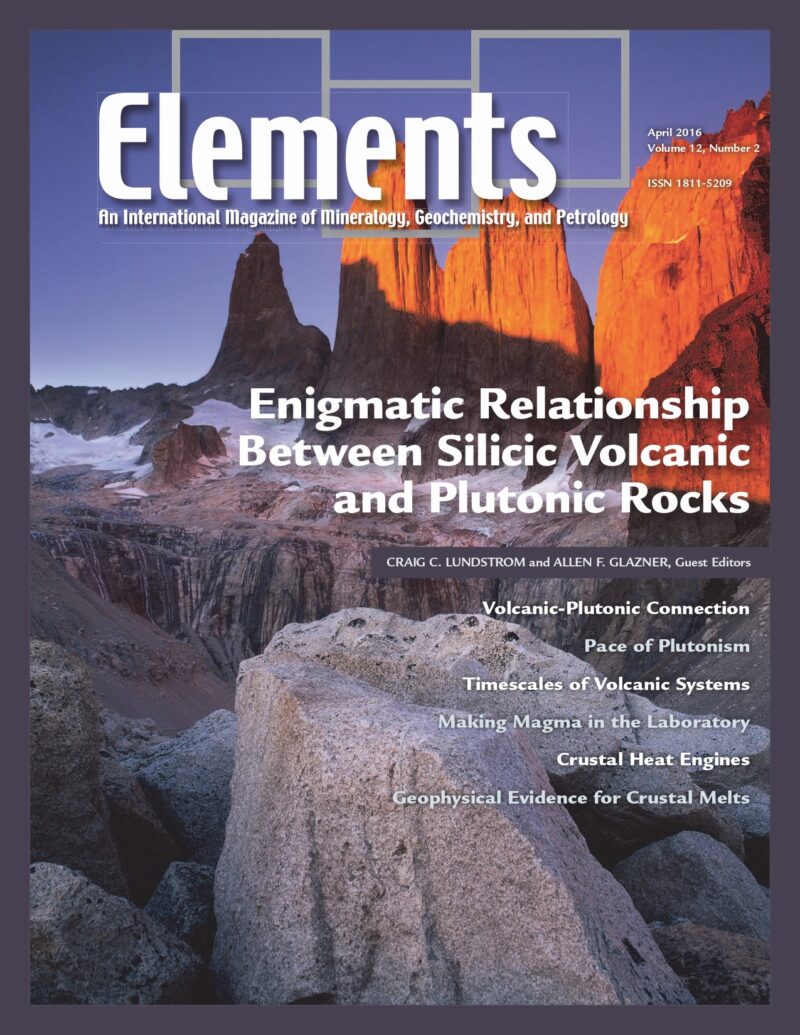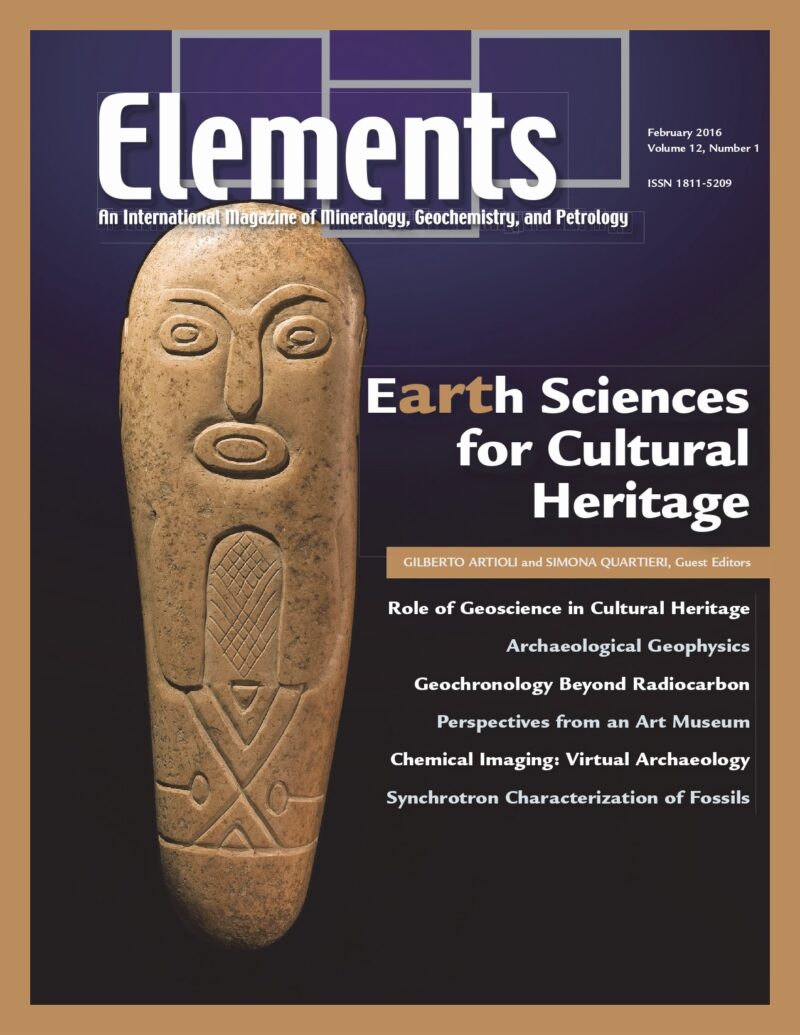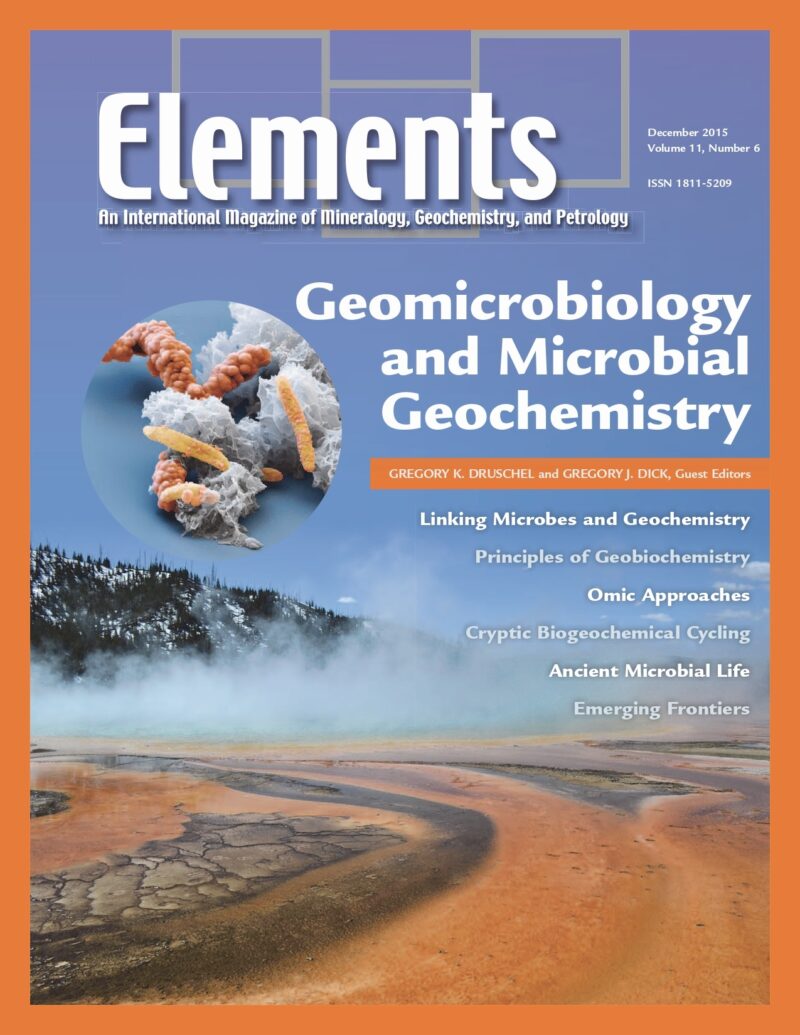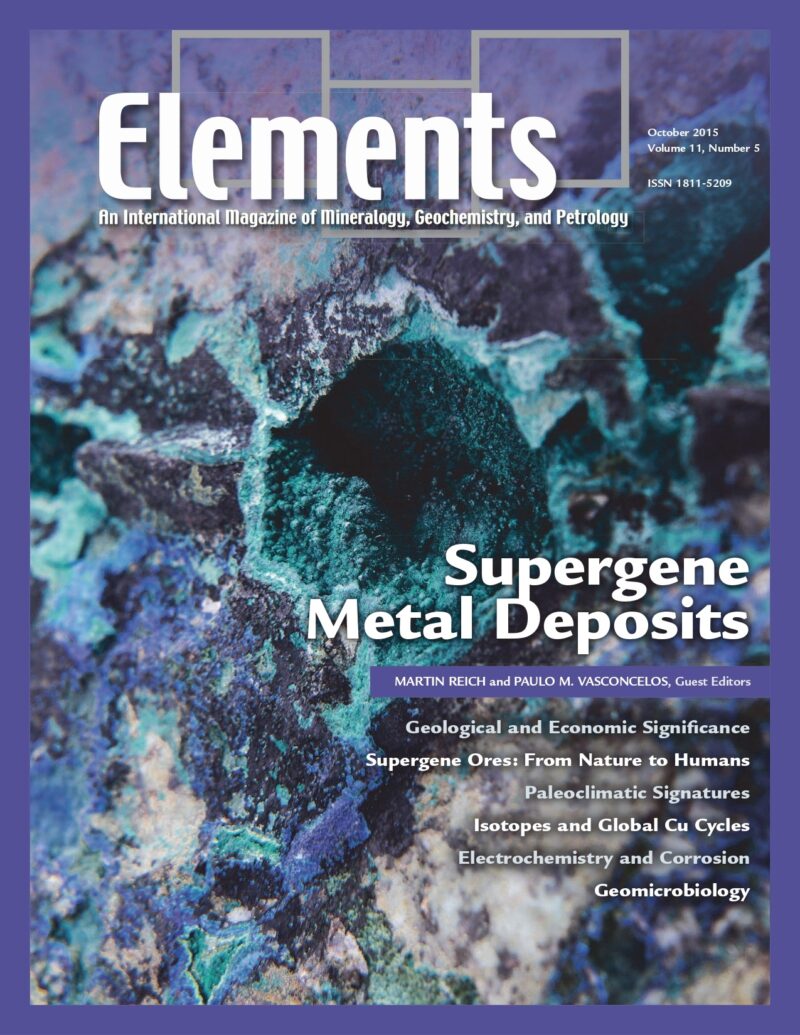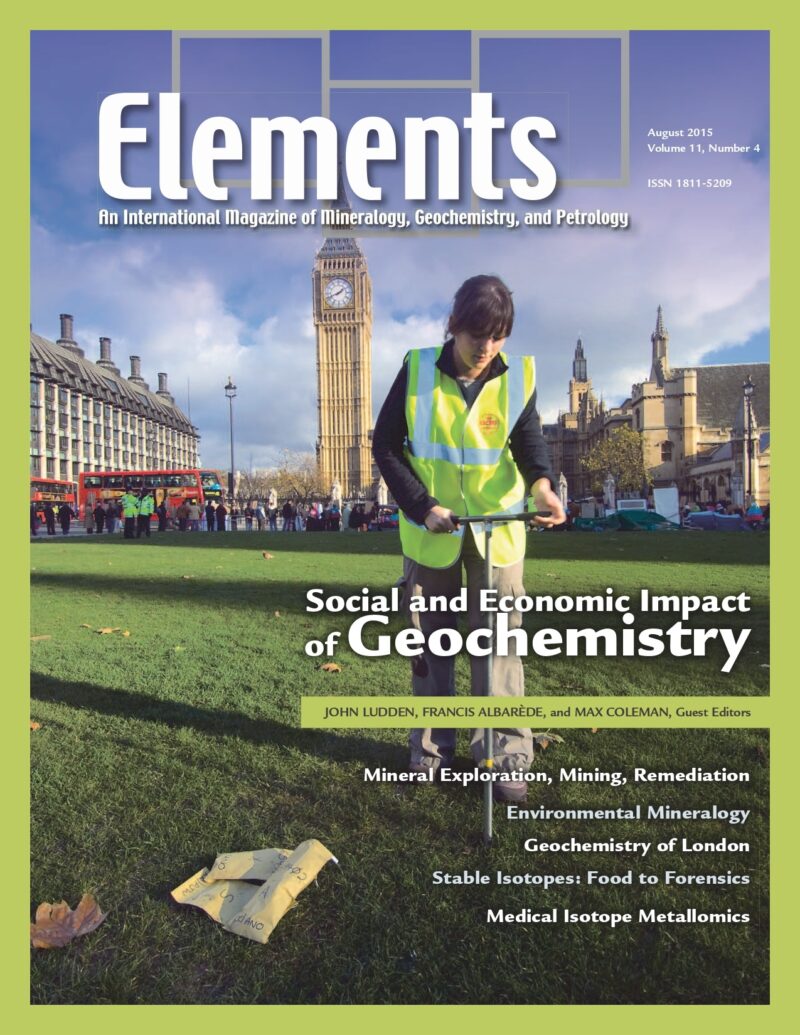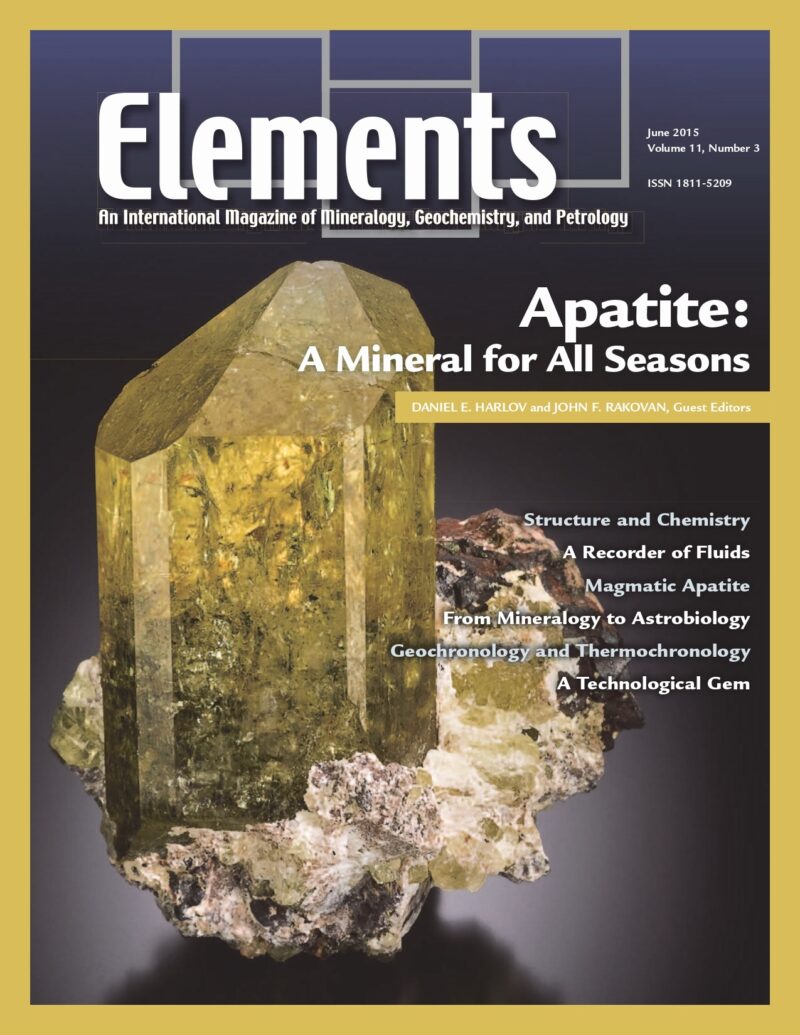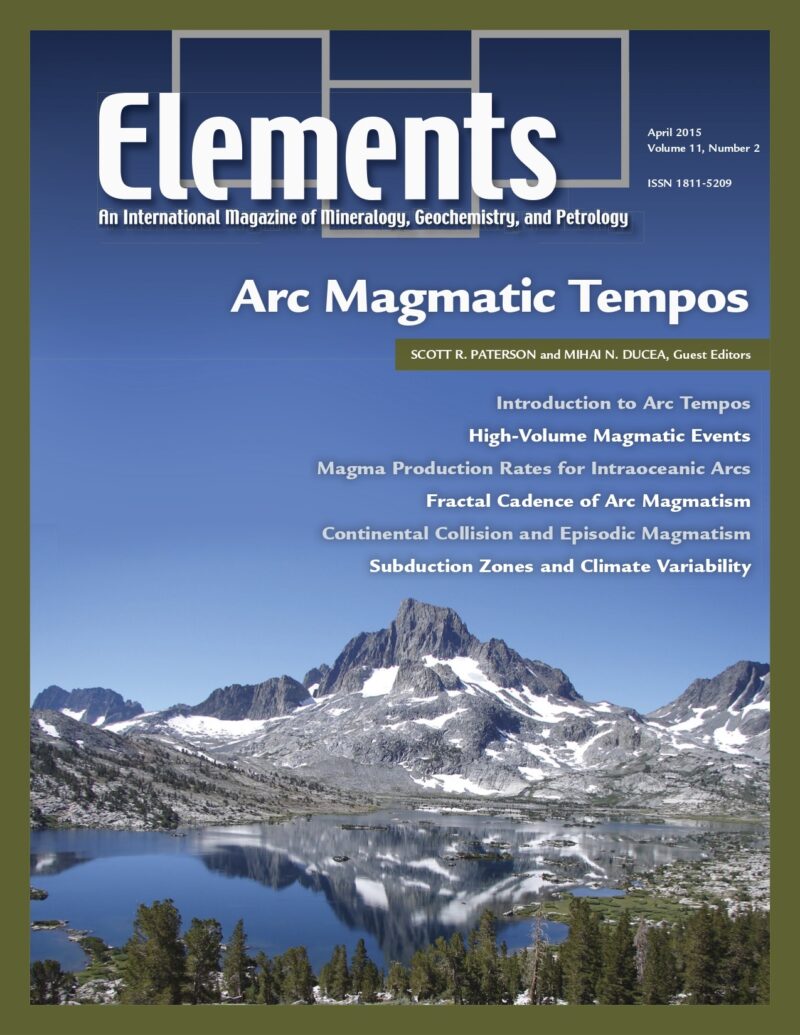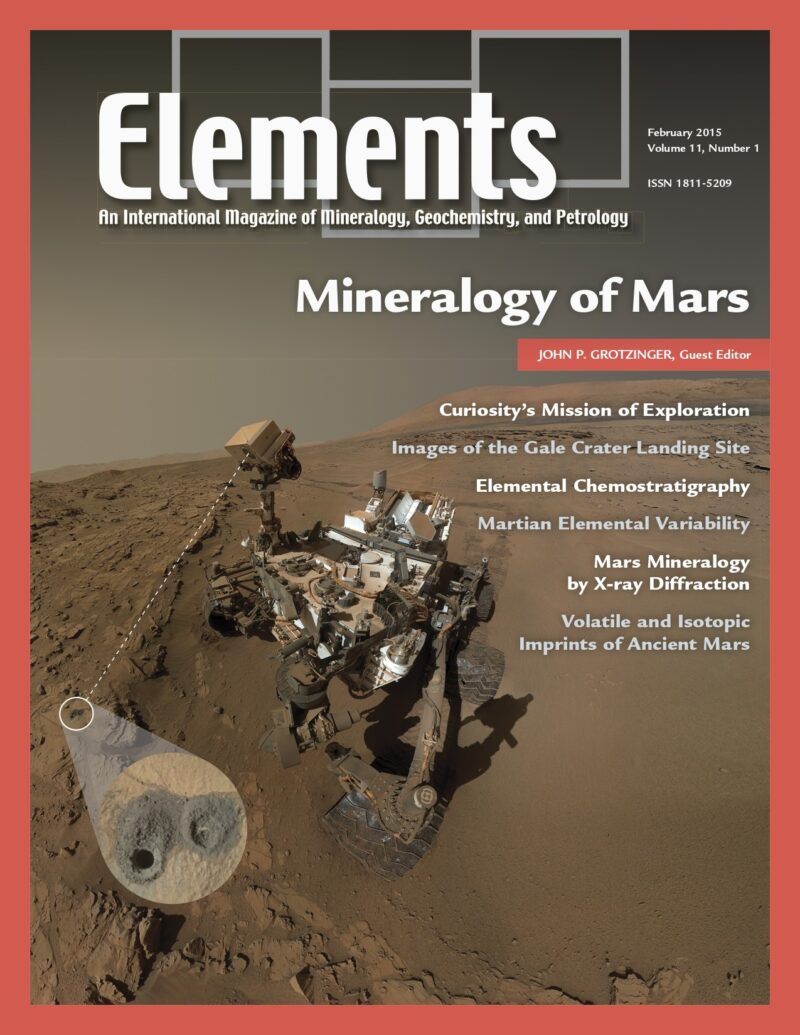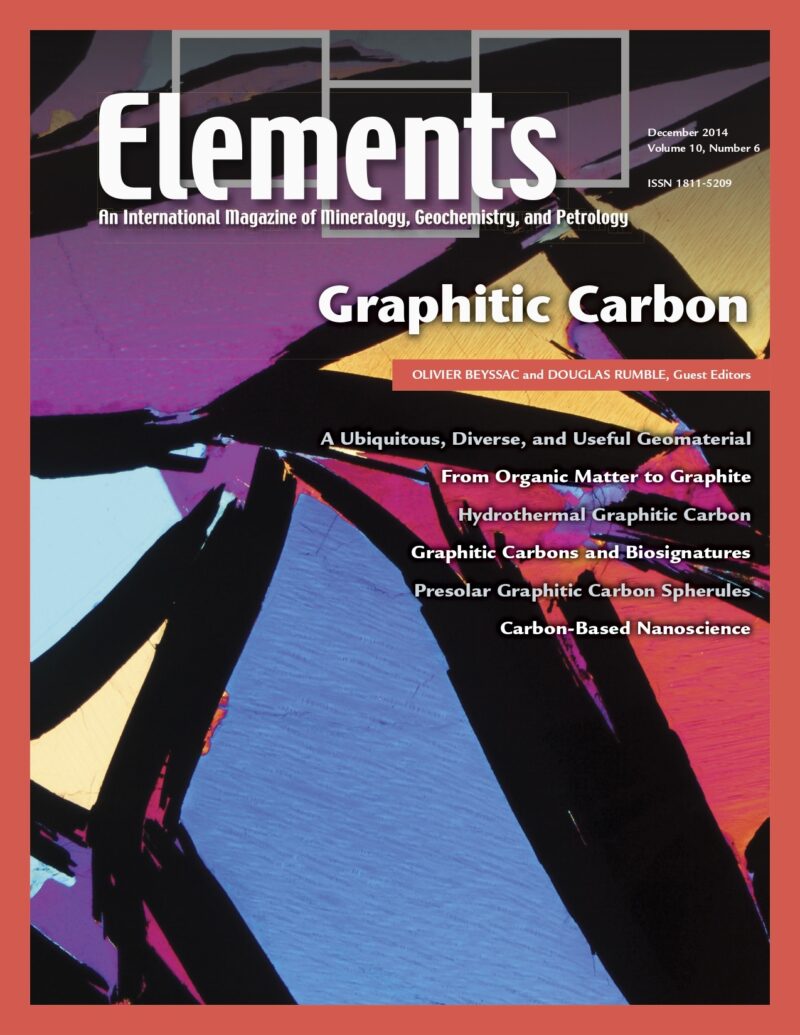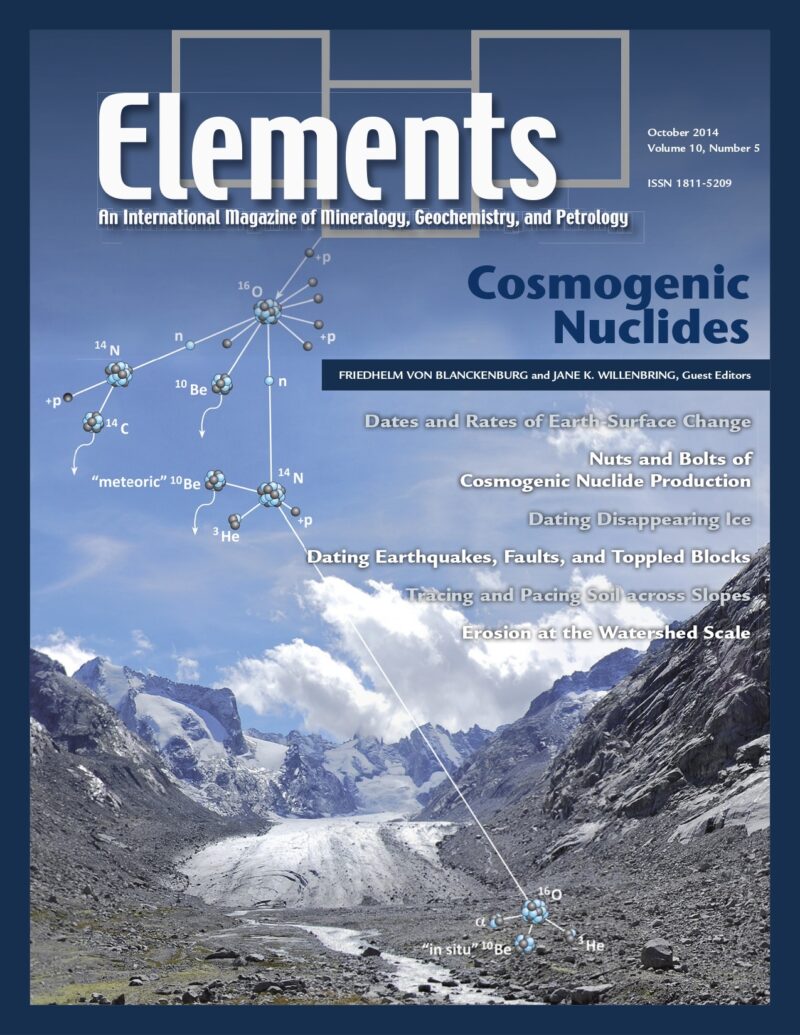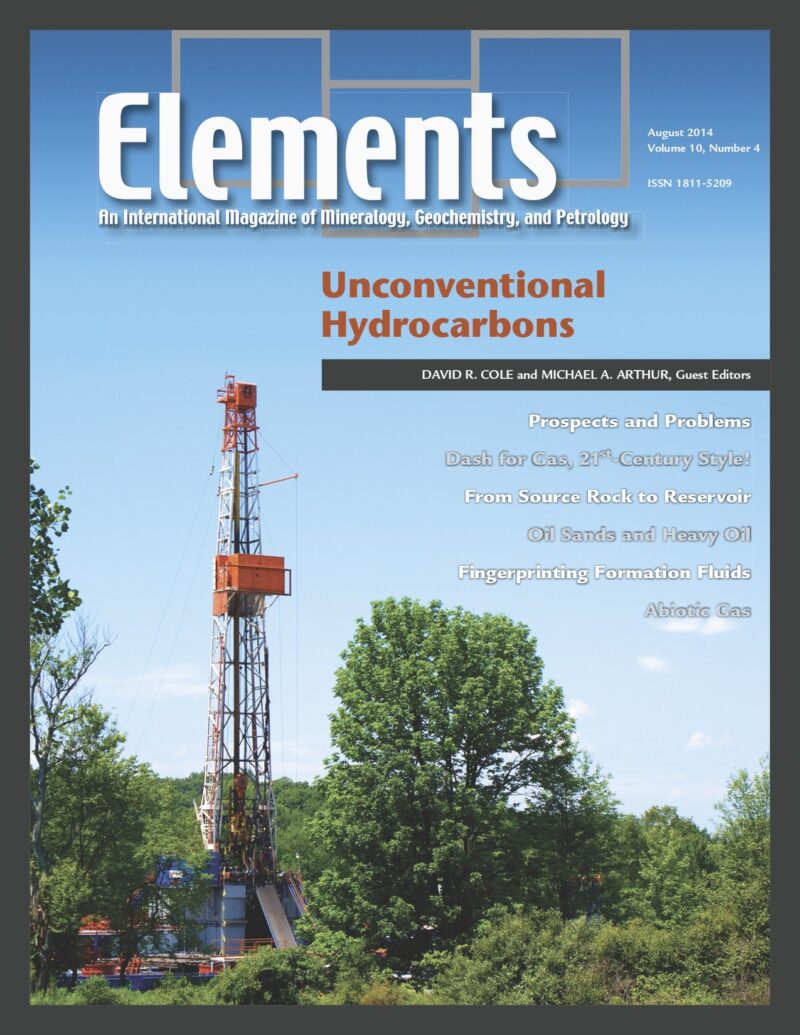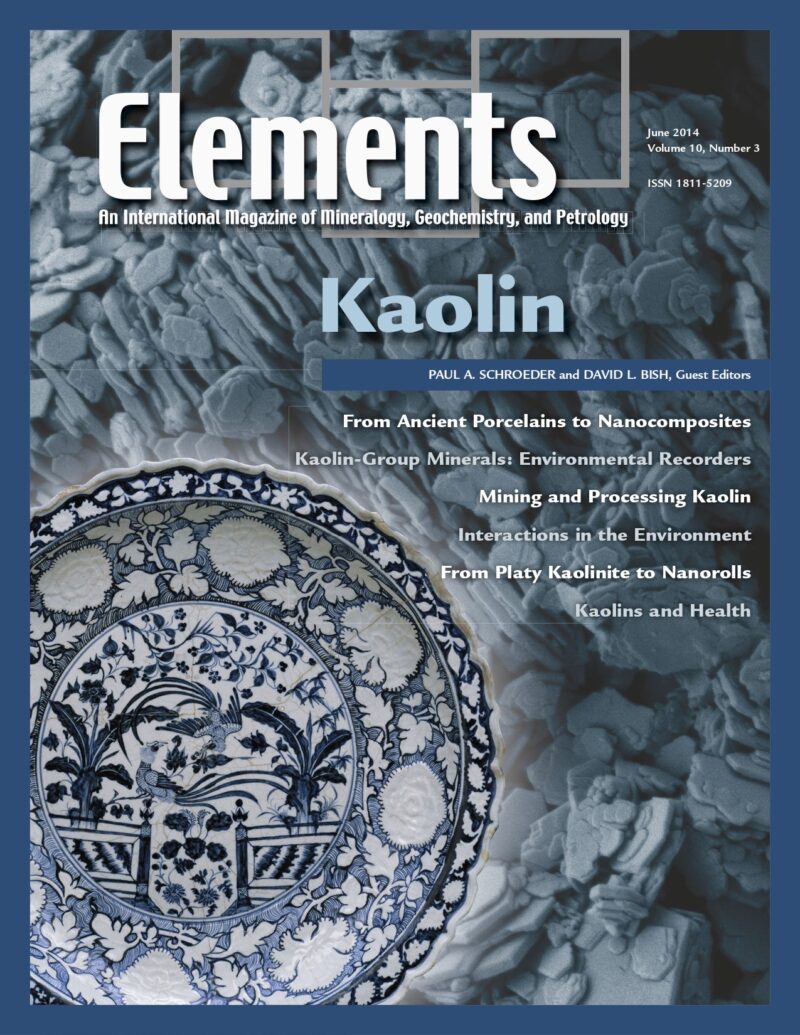-
Enigmatic Relationship Between Silicic Volcanic And Plutonic Rocks, April 2016, Vol. 12, No. 2
$20.00The relationship between silicic volcanic and plutonic rocks has long puzzled geologists. Although the compositional evolution for volcanic and plutonic rock suites are virtually identical, there is much debate whether rhyolites form as melt extracted from granite plutons or whether the two rock types reflect wholly separate origins.
-
Earth Sciences For Cultural Heritage, February 2016, Vol. 12, No. 1
$20.00Archaeometry and conservation science are connected to the geosciences in three ways. Earth scientists can perceive the complexity of natural materials and of the artifacts produced by human activities, they understand the geological and physico-chemical processes acting on them, and they have a mastery of the techniques used to investigate heritage materials at different scales.
-
Geomicrobiology And Microbial Geochemistry, December 2015, Vol. 11, No. 6
$20.00Microbes drive the interplay of Earth and life and thus control critical processes in ocean, atmosphere, and terrestrial environments. Indeed, this unseen part of our world has regulated the cycling of key elements throughout geologic time.
-
Supergene Metal Deposits, October 2015, Vol. 11, No. 5
$20.00Supergene metal deposits form when deeply buried orebodies are exposed at the surface and undergo oxidation, dissolution, and significant reconcentration of metals. Much of the global economic and scientific interest in these ores stems from their mineralogical diversity and advantages for exploitation due to their surficial development and increased grades.
-
Social And Economic Impact Of Geochemistry, August 2015, Vol. 11, No. 4
$20.00As geochemists and mineralogists, we are well aware of the impact of our science and when pushed we can often reel out great examples where our discoveries have influenced industry and the social wellbeing on the planet. However, this sort of drum-beating is not intuitive, and the explicit need to demonstrate impact in our science is, in many nations, being used as a measure of the required funding level for our discipline.
-
Apatite: A Mineral For All Seasons, June 2015, Vol. 11, No. 3
$20.00At the intersection of the biological, geological, and materials science realms, the topic of apatite is highly diverse and interdisciplinary. Apatite-group minerals are the dominant phosphates in the geosphere and biosphere.
-
Arc Magmatic Tempos, April 2015, Vol. 11, No. 2
$20.00Research over the past decade has established that magmatism in oceanic and continental arcs is not temporally or spatially steady-state. The causes of well-documented order of magnitude increases in magmatic production over relatively short-lived, high-volume events remain controversial.
-
Mineralogy Of Mars, February 2015, Vol. 11, No. 1
$20.00The Mars Science Laboratory rover Curiosity touched down on the surface of Mars on August 5, 2012. Curiosity was built to search and explore for habitable environments.
-
Graphitic Carbon, December 2014, Vol. 10, No. 6
$20.00In natural systems, graphitic carbons are widespread and exhibit an infinite range of structure, from amorphous-like compounds (e.g.
-
Cosmogenic Nuclides, October 2014, Vol. 10, No. 5
$20.00The Earth’s surface is the thin, ever-changing layer on which we live. The geochemical study of cosmogenic nuclides is currently revolutionizing our understanding of the processes that shape this surface layer by providing their rates and dates.
-
Unconventional Hydrocarbons, August 2014, Vol. 10, No. 4
$20.00The realization that unconventional hydrocarbons, such as gas and oil shale, oil sands, and heavy oil, can now be exploited more effectively and economically has stimulated exploration and exploitation on a global scale. This has led to a new economic and environmental landscape in energy matters that we are only now starting to understand.
-
Kaolin, June 2014, Vol. 10, No. 3
$20.00Although bearing the simple name “kaolin,” this natural material has a variety of geologic origins and many industrial applications significant to society. Known as china clay, kaolin has a long history dating back to Kauling, China, and its first exploitation in the field of ceramics.

